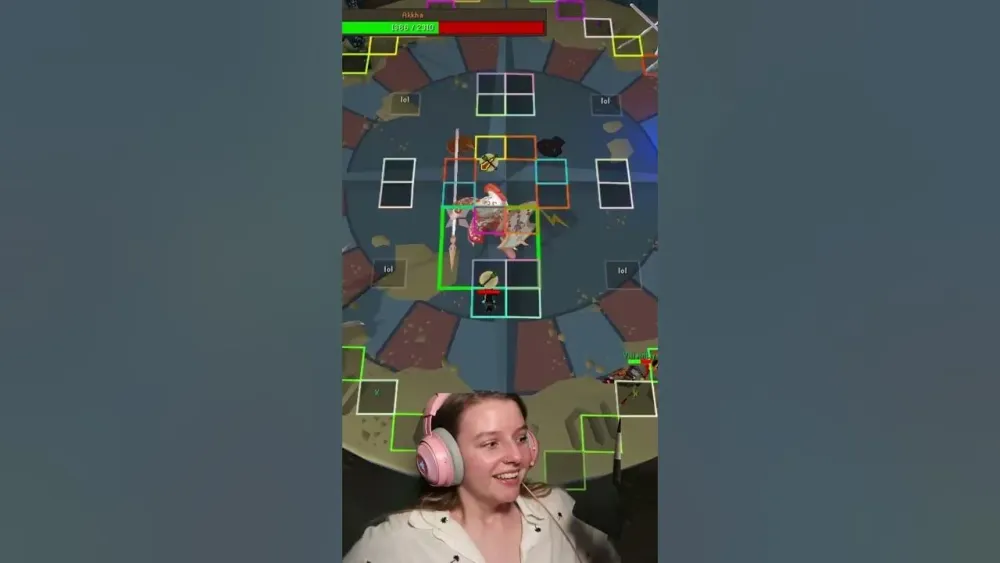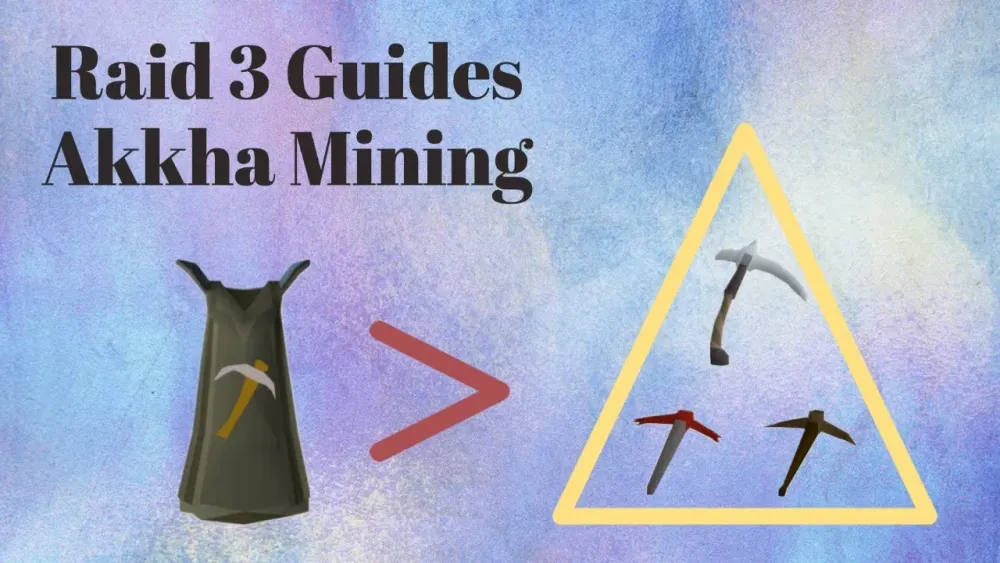Your cart is empty
How to Solve the Light Box Puzzle in OSRS: A Step-by-Step Guide

Warning: Undefined variable $post in /home/osrsmoneymaking.guide/public_html/wp-content/themes/kadence/functions.php on line 391
Warning: Attempt to read property "ID" on null in /home/osrsmoneymaking.guide/public_html/wp-content/themes/kadence/functions.php on line 391
Old School RuneScape (OSRS) is packed with intriguing challenges, and one that often stumps players is the Light Box puzzle. Found in Master Clue Scrolls as part of the Treasure Trails activity, this 5×5 grid puzzle requires you to flip switches to turn on all the lights. If you’ve ever stared at those eight switches wondering where to start, you’re not alone! In this detailed guide, we’ll walk you through how to solve the Light Box puzzle in OSRS, offering strategies, tips, and tricks to make it manageable—even enjoyable. Whether you’re a seasoned adventurer or a newbie treasure hunter, this blog post is your key to mastering this brain teaser.
The Light Box is a unique puzzle encountered during Master-level Treasure Trails in OSRS. It’s an item you receive as part of a clue scroll, and solving it advances you toward your next clue or reward. The puzzle consists of a 5×5 grid (25 lights total) and eight switches labeled A through H. Your goal? Turn on all the lights by flipping these switches in the right combination. Sounds simple, right? Not quite—each switch controls a seemingly random set of lights, and figuring out the pattern is where the challenge lies.
Why It’s Tricky
Unlike sliding puzzle boxes, the Light Box doesn’t give you a clear visual cue to follow. The switches interact with the grid in ways that aren’t immediately obvious, and flipping one switch might toggle multiple lights on or off. This complexity is what makes it a hallmark of Master Clue Scrolls—and why players often seek a reliable method to crack it.
Where You’ll Encounter It
You’ll only face the Light Box in Master Treasure Trails, which are the highest difficulty tier in OSRS clue scrolls. These trails are known for their tough puzzles and rare rewards, so solving the Light Box is a rite of passage for serious treasure hunters chasing that elusive loot.
Understanding the Mechanics of the Light Box

Before diving into solutions, let’s break down how the Light Box works. Each of the eight switches (A-H) is wired to a specific subset of the 25 lights. Flipping a switch toggles its connected lights—turning off any that are on and turning on any that are off. The catch? The connections are randomized for each puzzle instance, and there’s no in-game hint about which switch controls which lights. Your job is to deduce these relationships and find the perfect combination.
The 5×5 Grid Layout
The grid is a simple 5×5 square, with lights numbered 1 to 25 (top-left to bottom-right in reading order). When you open the Light Box, some lights might already be on, while others are off
- 25 individual lights arranged in rows and columns.
- 8 switches labeled A through H, each affecting multiple lights.
- Randomized connections that change with each new puzzle.
How Switches Interact
Each switch has a hidden “control list” of lights it toggles. For example, Switch A might affect lights 1, 7, and 13, while Switch B controls 2, 9, and 20. The goal is to identify these patterns—or bypass the need to fully map them with a solving strategy.
Step-by-Step Methods to Solve the Light Box
Now, let’s get to the good stuff: how to solve it. There are several approaches, ranging from systematic deduction to clever shortcuts. We’ll cover three main methods—choose the one that suits your patience level and playstyle.
Method 1: The Elimination Strategy
This is the most logical and widely recommended method for solving the Light Box. It involves testing switches to find their effects and gradually narrowing down the solution.
- Start with a notepad: Number the lights 1-25 on paper (or use a digital note app).
- Test each switch: Flip Switch A and note which lights change (e.g., 1, 7, 13). Reset by flipping it again, then move to Switch B, and so on through H.
- Look for unique controls: Find a light affected by only one switch (e.g., light 5 toggles only with Switch C). That switch’s position (on or off) is now locked—leave it on if the light needs to be on.
- Eliminate and repeat: With one switch fixed, retest the others. Find the next light with a single remaining switch, lock that switch, and continue until all lights are on.
Pros: Guaranteed to work; builds your understanding of the puzzle.
Cons: Time-consuming and requires careful note-taking.
Method 2: The Brute Force Shortcut
If you’re short on patience, this method uses a sequence that often works due to a quirk in the puzzle’s design. It’s not foolproof, but it’s quick.
- Flip switches in this order: A, B, A, C, A, B, A.
- Check the grid. If all lights aren’t on, destroy the Light Box (right-click and select “Destroy”) and get a new one from the NPC who gave it to you.
- Repeat until it solves—usually takes 2-3 tries.
Pros: Fast and requires no thinking.
Cons: Relies on luck; destroying the box resets progress.
Method 3: Using RuneLite’s Built-In Solver
If you use the RuneLite client (and most OSRS players do), you’re in luck—it has a Light Box solver built in.
- Open the puzzle: Start the Light Box in-game.
- Flip a few switches: Toggle 2-3 switches randomly to give RuneLite data to work with.
- Wait for the overlay: RuneLite will highlight the switches to flip in green. Follow the sequence it provides.
- Solve it: The puzzle should resolve in seconds.
Pros: Effortless and fast.
Cons: Requires RuneLite; less satisfying for puzzle purists.
Tips and Tricks for Faster Solving
Once you’ve picked a method, these tips can streamline the process and reduce frustration.
Use a Template
Create a reusable 5×5 grid template (digital or paper) numbered 1-25. This saves setup time for each puzzle and keeps your notes organized.
Work in Batches
If using the elimination method, test switches in groups (e.g., A-D, then E-H) to spot patterns faster. This can cut down on redundant flipping.
Know When to Reset
If you’re stuck or make a mistake, don’t hesitate to destroy the Light Box and start fresh. It’s better than wrestling with a messed-up grid.
Leverage Community Tools
Online solvers like osrs-lightbox-solver.fletom.com let you input your grid and get a solution. While not as seamless as RuneLite, it’s a solid backup for non-RuneLite users.
Common Mistakes to Avoid
Even with a plan, it’s easy to trip up. Here’s what to watch out for:
Skipping Notes
Relying on memory instead of writing down switch effects is a recipe for confusion. Always track your progress.
Overcomplicating It
Don’t assume every switch needs flipping—sometimes the solution uses fewer than eight. Stick to your method and avoid random guessing mid-process.
Ignoring RuneLite
If you’re not using RuneLite and struggling, you’re making it harder than it needs to be. Install it for this puzzle alone—it’s worth it.
| Method | Time Required | Difficulty | Tools Needed |
|---|---|---|---|
| Elimination | 10-15 mins | Medium | Notepad |
| Brute Force | 2-5 mins | Easy | None |
| RuneLite | 1-2 mins | Very Easy | RuneLite Client |
With these methods and tips, you’re ready to tackle the OSRS Light Box puzzle like a pro. Whether you enjoy the challenge of deduction or prefer the instant gratification of a solver, there’s a path for you. Next time you crack open a Master Clue Scroll, you’ll flip those switches with confidence—and maybe even snag that rare reward you’ve been chasing. Happy hunting!
Warning: Undefined variable $post in /home/osrsmoneymaking.guide/public_html/wp-content/themes/kadence/functions.php on line 391
Warning: Attempt to read property "ID" on null in /home/osrsmoneymaking.guide/public_html/wp-content/themes/kadence/functions.php on line 391

